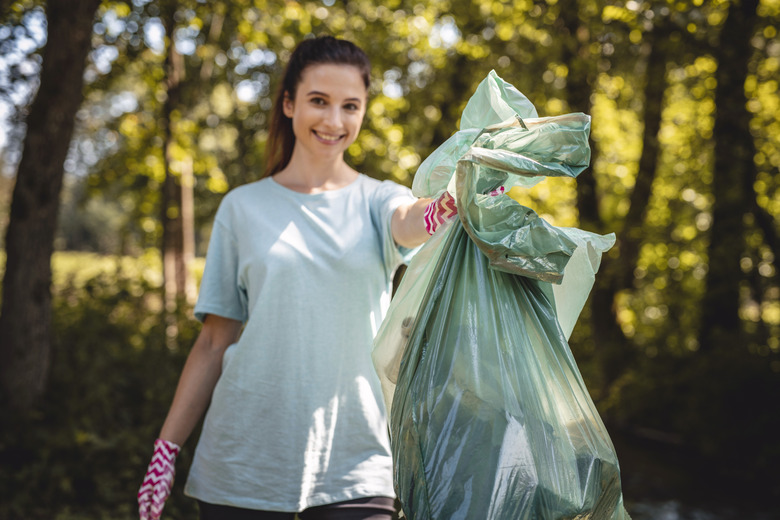Science Fair Ideas WIth Garbage Bags
When it comes to science fair projects, there's no need to spend a significant amount of money in order to create an impressive project. In fact, most people would be interested to learn an experiment's results for items that are found in the average household and that they all use on a regular basis. One affordable item you can use as the basis for a science experiment is garbage bags, which you probably already have in your house right now.
Biodegradable Bags
Biodegradable Bags
According to the U.S. Environmental Protection Agency, Americans generate 4.6 pounds of trash per person per day, and this number is continuing to increase. For a science fair project, you could test numerous brands of garbage bags to see which type breaks down fastest in a landfill and is therefore best for the environment. To conduct the experiment, bury garbage-filled bags of various types in your yard and observe the changes every four months.
Bag Strength
Bag Strength
Test the strength of garbage bags to see what affects the strength and what type is most durable. You can also compare the strength of garbage bags with the cost of the bags or the thickness of the bags. To do so, purchase multiple brands of garbage bags, write down the cost of each and then fill them until only one is left intact. Alternatively, weigh the bags to find out each one's thickness, write down the weight of each, factor in the height of each also and then fill them until only one is intact.
Weather Conditions
Weather Conditions
Oftentimes, your garbage bags are left in outdoor garbage bins, on driveways or in dumpsters, and the bags must deal with numerous weather conditions. As a science fair project, you could test how each type of weather condition affects the strength and durability of the bag. For example, place garbage-filled bags in direct sunlight, in freezing temperatures and in rainfall. After each experiment, hold the garbage-filled bag up to see if any of the weather conditions affected the bag.
Bag Material
Bag Material
Different types of materials are used to form garbage bags. You could test to see which material is the strongest and most durable for holding trash. For example, try standing on a chair and dropping trash from a high level to create force. Drop the trash into a black plastic bag, a white plastic bag, a burlap sack, a bag made from recycled materials, a brown paper bag and so on. See which bag lasts the longest as you continue to fill the bags with trash.
Cite This Article
MLA
Howe, Alicia. "Science Fair Ideas WIth Garbage Bags" sciencing.com, https://www.sciencing.com/science-fair-ideas-garbage-bags-5953358/. 22 November 2019.
APA
Howe, Alicia. (2019, November 22). Science Fair Ideas WIth Garbage Bags. sciencing.com. Retrieved from https://www.sciencing.com/science-fair-ideas-garbage-bags-5953358/
Chicago
Howe, Alicia. Science Fair Ideas WIth Garbage Bags last modified August 30, 2022. https://www.sciencing.com/science-fair-ideas-garbage-bags-5953358/
